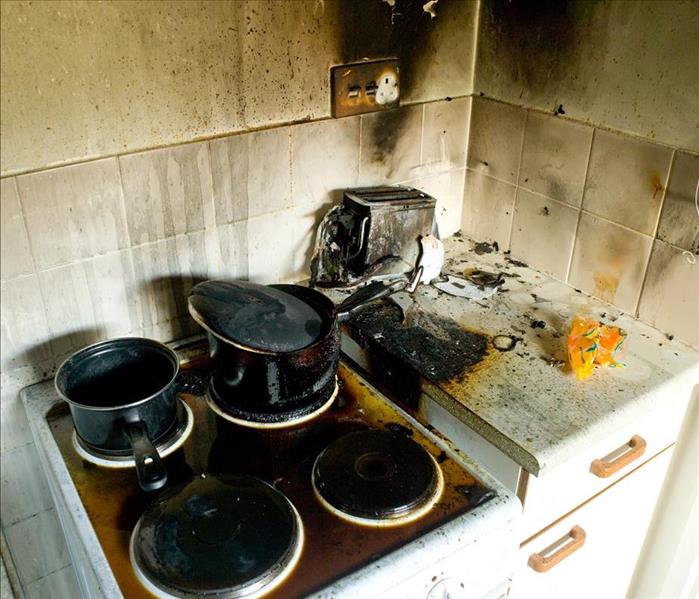Is Fire Damage Cooking in Your Pensacola Kitchen?
2/10/2020 (Permalink)
 Grease fires create residue that is difficult to remove. SERVPRO has the training and cleaners to restore your home to its preloss condition.
Grease fires create residue that is difficult to remove. SERVPRO has the training and cleaners to restore your home to its preloss condition.
Eliminating Fire Damage from a Pensacola Kitchen
Between 2008 and 2017, the annual loss incurred from fire damage to homes shot up 12% to a whopping $23 billion. Even a small fire can cost thousands in damages on top of proliferating foul odors and hard-to-remove residues. In the case of cooking fires, invisible protein residues can discolor surfaces while emanating foul odors. Consumer-grade products do not clean grease residues effectively.
If you need fire damage mitigation for your Pensacola homes kitchen, SERVPRO technicians are ready to assist you at a moment's notice. You can find teams of Institute of Inspection Cleaning and Restoration Certification (IICRC) trained technicians at over 1,700 franchise locations in the United States and Canada. Whether your disaster occurs on a weeknight, weekend, or holiday, technicians can come to you soon after your call to begin the cleanup process.
Finding the Right Kitchen Fire Extinguisher
Household extinguishers are generally labeled A, B, or C, which indicates what types of fires the extinguisher can fight most effectively. A extinguishers handle ordinary combustibles like wood and paper, B is most useful for flammable liquids like cooking oil or gasoline, and C is ideal for electricity.
These classifications are also preceded by numbers, which are the classification rating of your fire extinguisher. This system determines the relative effectiveness your extinguisher has against each type of fire. The higher the number, the more effective the extinguisher. Type C fire extinguishers typically do not have number designations, as this classification only indicates that the chemicals do not conduct electricity.
There are several different weights and sizes of fire extinguishers designed for different situations. The kitchen may benefit the most from a 5-pound rechargeable extinguisher, or a stovetop extinguisher. If you use the latter, do not use them for deep fryer fires, as the grease splashed by extinguishing chemicals can spread the fire. If you get a stovetop model, consider a pressurized magnetic can that can pop open from heat and spray baking soda, which helps put out the fire.
How SERVPRO Can Help
One of the essential steps in ensuring effective cleaning after a fire is precleaning or preconditioning. Here, technicians use various cleaning methods so that other cleaning materials can work more effectively. Precleaning procedures include vacuuming loose soils, agitating soot deposits with compressed air, and using both soft and coarse brushes to dislodge soils without damaging surfaces.
To address protein residues from a cooking fire, technicians may use enzyme digesters to break down organic molecules into odor-free materials such as carbon dioxide, water, or a water-soluble product.
SERVPRO of West Pensacola helps homeowners save their homes by being Faster to Any Size Disaster. For the lightning-fast disaster mitigation service, you can call (850) 469-1160.
More about Pensacola.






 24/7 Emergency Service
24/7 Emergency Service